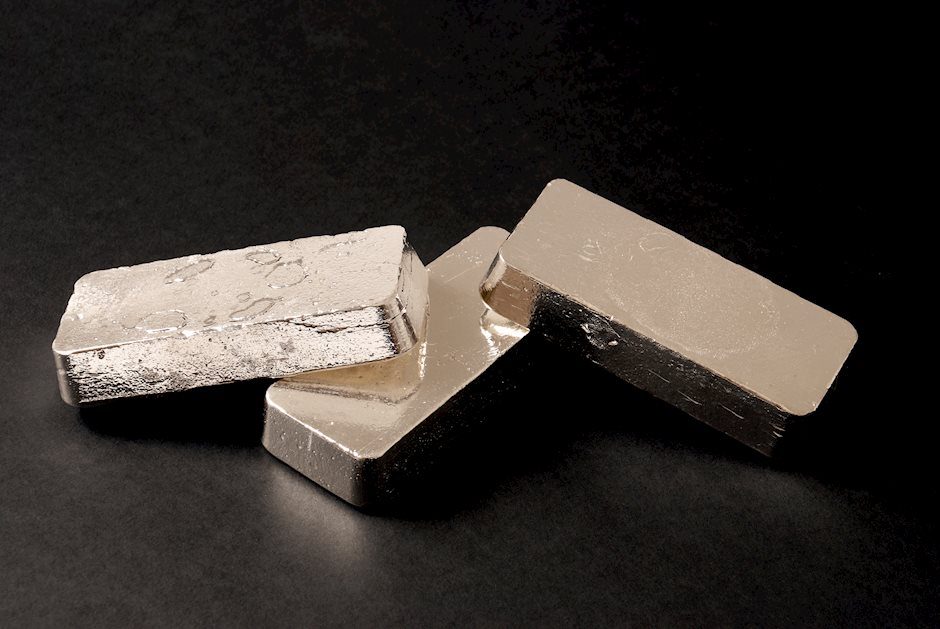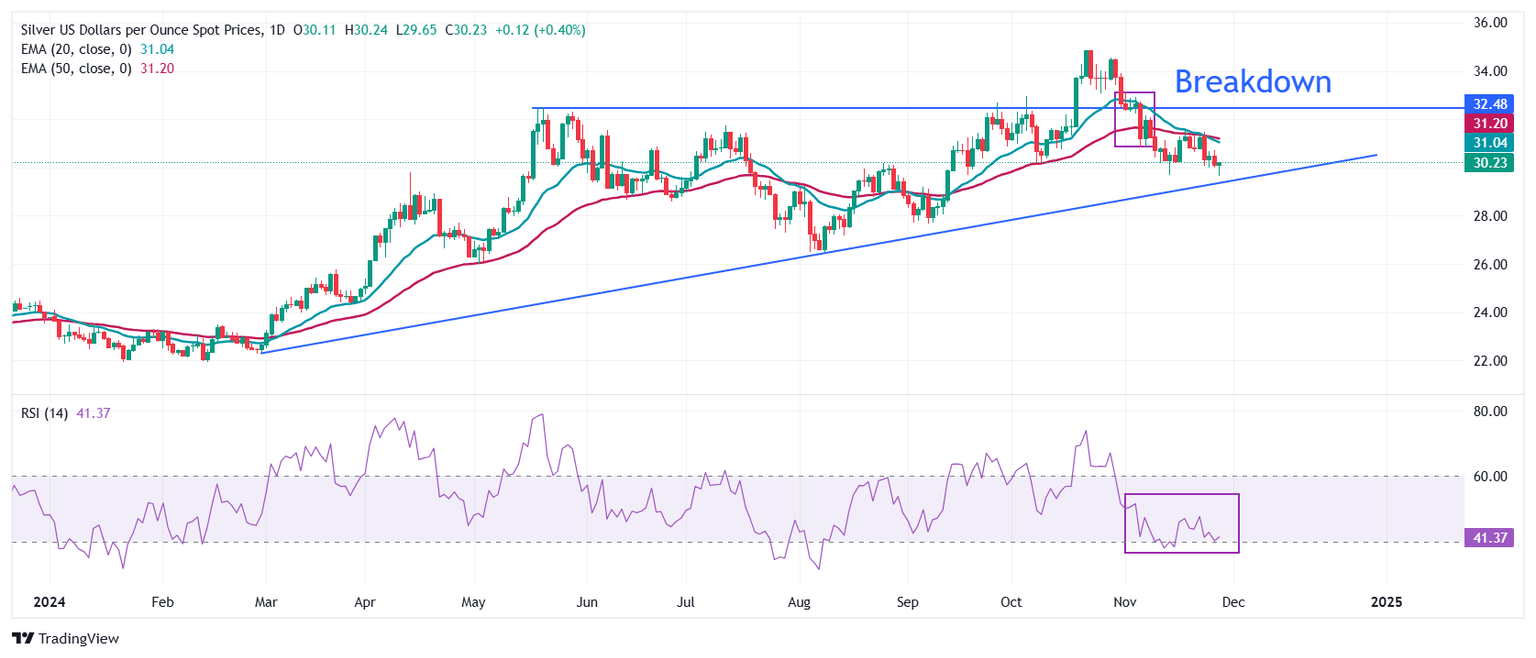Silver Price Forecast: XAG/USD bounces back strongly on fresh escalation in Russia-Ukraine war
- Silver price rebounds strongly as a fresh escalation in the war between Russia and Ukraine bolstered its safe-haven demand.
- Russia hit 14 targets in Ukraine, which resulted in a nationwide blackout.
- The US Dollar bounces back as the Fed is expected to cut interest rates cautiously.

Silver price (XAG/USD) recovers its intraday losses and ticks up to nearly $30.15 in the North American session on Thursday after posting a fresh 11-week low around $29.65. The white metal bounces back as a fresh escalation in the war between Russia and Ukraine has improved its safe-haven demand.
Tensions between Ukraine and Russia intensified after Russia launched its Intermediate-range Ballistic Missiles (IRBM) to hit 17 targets in Ukraine including, military facilities, defense industry facilities and their support systems in response to their attack deep inside Russia through the United States (US) ATACMS missiles last week, Russian President Vladimir Putin said at a security summit in Kazakhstan on Thursday.
According to the energy ministry in Kyiv, this is the 11th large-scale assault by Russia on Ukraine’s energy supplies this year, which caused the nationwide blackout, CNN reported.
Historically, the safe-haven appeal of precious metals such as Silver increases at times of global market uncertainty or heightened geopolitical risks.
Meanwhile, the US Dollar (USD) bounces back in a thin trading volume trading day as United States (US) markets are closed on account of Thanksgiving Day. The US Dollar Index (DXY), which tracks the Greenback’s value against six major currencies, rebounds to near 106.30 after a sharp correction in the last three days. The USD Index rebounds on expectations that projected growth in the Personal Consumption Expenditure (PCE) inflation data for November would force Federal Reserve (Fed) officials to act cautiously on interest rate cuts.
Silver technical analysis
Silver price rebounds strongly after sliding to near the upward-sloping trendline around $29.50, which is plotted from the February 29 low of $22.30 on a daily timeframe. Still, the outlook of the Silver price is bearish as a bear cross, represented by 20 and 50-day Exponential Moving Average (EMA) around $31.30, points to an escalation in the downside trend.
The white metal weakened after the breakdown of the horizontal support plotted from the May 21 high of $32.50.
The 14-day Relative Strength Index (RSI) oscillates in the 40.00-60.00 range, suggesting a sideways trend.
Silver daily chart
Silver FAQs
Silver is a precious metal highly traded among investors. It has been historically used as a store of value and a medium of exchange. Although less popular than Gold, traders may turn to Silver to diversify their investment portfolio, for its intrinsic value or as a potential hedge during high-inflation periods. Investors can buy physical Silver, in coins or in bars, or trade it through vehicles such as Exchange Traded Funds, which track its price on international markets.
Silver prices can move due to a wide range of factors. Geopolitical instability or fears of a deep recession can make Silver price escalate due to its safe-haven status, although to a lesser extent than Gold's. As a yieldless asset, Silver tends to rise with lower interest rates. Its moves also depend on how the US Dollar (USD) behaves as the asset is priced in dollars (XAG/USD). A strong Dollar tends to keep the price of Silver at bay, whereas a weaker Dollar is likely to propel prices up. Other factors such as investment demand, mining supply – Silver is much more abundant than Gold – and recycling rates can also affect prices.
Silver is widely used in industry, particularly in sectors such as electronics or solar energy, as it has one of the highest electric conductivity of all metals – more than Copper and Gold. A surge in demand can increase prices, while a decline tends to lower them. Dynamics in the US, Chinese and Indian economies can also contribute to price swings: for the US and particularly China, their big industrial sectors use Silver in various processes; in India, consumers’ demand for the precious metal for jewellery also plays a key role in setting prices.
Silver prices tend to follow Gold's moves. When Gold prices rise, Silver typically follows suit, as their status as safe-haven assets is similar. The Gold/Silver ratio, which shows the number of ounces of Silver needed to equal the value of one ounce of Gold, may help to determine the relative valuation between both metals. Some investors may consider a high ratio as an indicator that Silver is undervalued, or Gold is overvalued. On the contrary, a low ratio might suggest that Gold is undervalued relative to Silver.
Author

Sagar Dua
FXStreet
Sagar Dua is associated with the financial markets from his college days. Along with pursuing post-graduation in Commerce in 2014, he started his markets training with chart analysis.


















